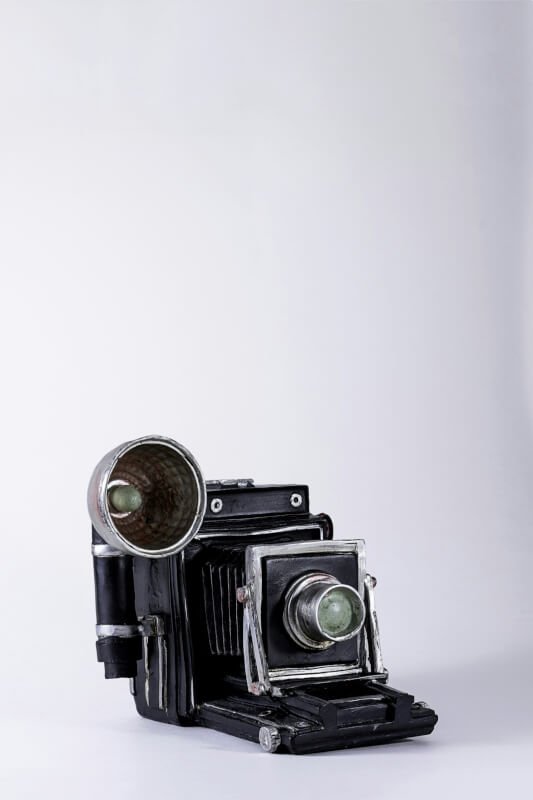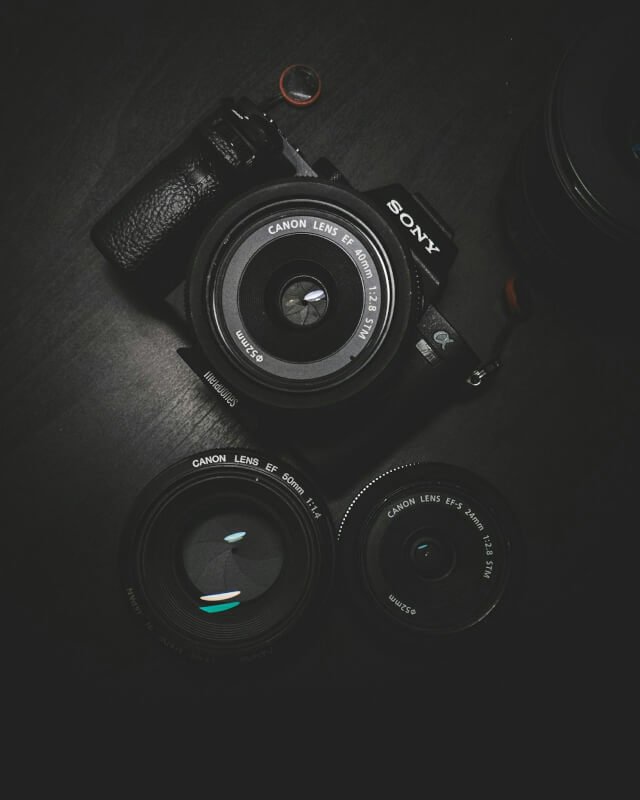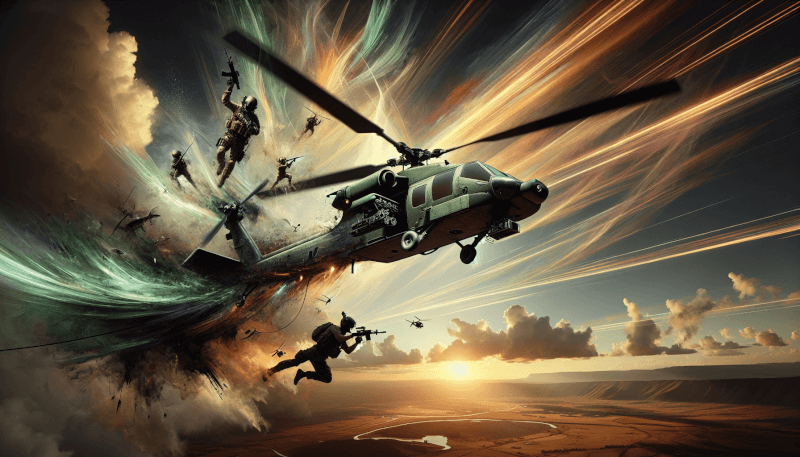Are you a drone enthusiast looking to take your aerial photography to the next level? Look no further! In this article, you will learn how to perform advanced camera movements with your RC heli. With these techniques, you will be able to capture stunning and dynamic shots that will truly elevate your photography game. Whether you are shooting landscapes, action shots, or simply want to add a unique perspective to your videos, mastering these camera movements will unlock a world of creative possibilities. So grab your RC heli, buckle up, and get ready to soar to new heights!
Choose the Right RC Helicopter
When it comes to choosing the right RC helicopter for capturing stunning aerial footage, there are a few key factors to consider. First, you need to think about the size and weight of the helicopter. Larger and heavier helicopters tend to be more stable in flight, which is crucial when trying to capture smooth and professional-looking footage. However, keep in mind that they may also be more difficult to maneuver. On the other hand, smaller and lighter helicopters can be easier to control but may not offer the same stability.
Next, it’s important to look for a helicopter that offers a good balance between stability and maneuverability. Stability is essential for capturing steady shots, while maneuverability allows you to easily navigate through different angles and positions. Ideally, you want a helicopter that can provide both stability and maneuverability to achieve the best results.
Lastly, don’t forget to check the battery life of the RC helicopter. You don’t want your filming session to be cut short due to a low battery. Look for a helicopter that has a decent battery life and consider investing in spare batteries to ensure you have enough power to capture all the footage you need.
Mounting the Camera
Once you have selected the perfect RC helicopter for your aerial photography needs, the next step is to mount the camera. The type of camera you choose will depend on your specific requirements and budget. There are various options available, ranging from action cameras to compact DSLRs. Make sure to choose a camera that meets your needs in terms of image quality and features.
After selecting the camera, it’s time to determine the mounting option. Many RC helicopters come with built-in camera mounts or gimbal systems that provide stability and control for capturing smooth footage. If your helicopter doesn’t have a dedicated mounting system, you can explore aftermarket attachments or DIY solutions to securely attach the camera. Just ensure that the mounting option you choose is compatible with your camera and provides a stable platform for capturing clear shots.
Regardless of the mounting option you go for, it is essential to securely attach the camera to ensure it stays in place during flight. Use reliable mounting hardware and double-check that everything is tightened and secure before taking off.

Understanding RC Controls
Before you can start capturing advanced camera movements with your RC helicopter, it’s crucial to familiarize yourself with the transmitter controls. The transmitter is the handheld device that allows you to control your helicopter’s movements. Take the time to study the various buttons, switches, and joysticks on the transmitter. Understand their functions and how they affect the helicopter’s flight.
Two important aspects to learn about are throttle and pitch. Throttle control is responsible for adjusting the power sent to the helicopter’s rotor blades, which determines the altitude. Pitch control, on the other hand, adjusts the angle or pitch of the rotor blades, allowing the helicopter to move forward or backward.
Additionally, mastering roll and yaw controls is essential for achieving smooth and controlled movements. Roll control adjusts the angle of the helicopter from side to side, while yaw control changes the direction the helicopter is facing. Understanding and practicing these controls will give you the foundation needed for advanced camera movements.
Basic Camera Movements
Before diving into more complex camera movements, it’s important to master the basic maneuvers that will allow you to capture stable and controlled shots. Hovering in place is one of the fundamental techniques to practice. This involves maintaining a fixed position in the air, allowing you to capture still shots or videos without any lateral movement.
Ascending and descending are also important camera movements to learn. Being able to control the helicopter’s altitude smoothly and precisely will allow you to capture footage from different heights and angles. Practice ascending and descending at various speeds to gain better control over these movements.
Additionally, it’s essential to master forward and backward movement. This enables you to capture shots while the helicopter is in motion, adding dynamics to your aerial footage. Start by practicing slow and gradual movements to ensure smooth transitions and avoid sudden jerks that can ruin your shots.

Tilt and Pan Movements
Once you have a good grasp of the basic camera movements, it’s time to delve into more advanced techniques. Tilt angles are crucial for capturing different perspectives and adding a cinematic touch to your footage. Experiment with tilting the camera up and down while maintaining stability to achieve unique shots from different angles.
Achieving smooth pan shots is another important skill to learn. Panning involves rotating the helicopter horizontally, allowing you to capture footage that smoothly scans the surrounding environment. Practice panning at different speeds to find the right balance between smoothness and capturing the desired elements in your shots.
To take your camera movements to the next level, practice camera transitions. This involves smoothly transitioning between different camera movements, such as going from a hover to a tilt or combining a pan with an ascent or descent. These transitions can add a professional touch to your footage and create seamless sequences.
Tracking and Follow Shots
As you become more comfortable with the basic and advanced camera movements, you can start experimenting with tracking techniques. Tracking involves following a subject or object while maintaining focus on it throughout the flight. This technique is particularly useful for capturing action shots or following moving subjects.
To master tracking techniques, it’s important to anticipate the movement of the subject and adjust your helicopter’s position accordingly. Maintain a steady distance from the subject and try to keep it centered in your camera view. With practice, you’ll be able to capture smooth and stable tracking shots that truly impress.
Maintaining focus on the subject is crucial when attempting tracking shots. Keep your eyes on the subject and use the RC controls to adjust the helicopter’s position and maintain a clear view. Practicing hand-eye coordination and fine-tuning your control skills will greatly enhance your ability to capture stunning tracking shots.
Implementing follow shots takes tracking to the next level. Instead of simply tracking a subject, you actively fly alongside or behind it, capturing dynamic footage that showcases the subject’s movement and surroundings. Follow shots require precise control and smooth maneuvers to achieve the desired effect. Practice controlling the helicopter’s speed and maintaining a safe distance from the subject while capturing exciting follow shots.

Advanced Flight Techniques
Once you have mastered the basic and advanced camera movements, it’s time to explore more daring flight techniques. Executing banked turns adds a dynamic element to your footage. This technique involves tilting the helicopter to one side while turning, creating a visually appealing and dramatic effect. It may take some practice to achieve smooth banked turns, but the effort will be worth it when you see the impressive results in your footage.
Performing flips and rolls with your RC helicopter is another advanced flight technique that can add excitement and creativity to your aerial footage. Flips involve rotating the helicopter along its longitudinal axis, while rolls involve rotating it along its lateral axis. These maneuvers require precise control and coordination, so ensure you have a good understanding of the RC controls.
Trying inverted flight is the pinnacle of advanced flight techniques. Flying your RC helicopter upside down can produce awe-inspiring shots that captivate viewers. However, inverted flight is extremely challenging and requires exceptional piloting skills. Practice extensively in a safe and open environment before attempting inverted flight. Always prioritize safety and be mindful of your skill level before trying such advanced maneuvers.
Safety Precautions
While capturing stunning aerial footage with your RC helicopter is undoubtedly exciting, it’s essential to prioritize safety. Make sure to choose an open, controlled environment for flying your helicopter. Avoid crowded areas or locations with obstacles that can interfere with your flight.
Before taking off, always check for any potential interference that might disrupt the signal between your transmitter and the helicopter. Keep an eye out for power lines, Wi-Fi signals, or any other potential sources of interference. Ensure that your helicopter and transmitter are in good working condition, with no loose parts or damaged components that could affect the flight.
Battery power is another safety consideration. Make it a habit to regularly check the battery levels of both your RC helicopter and transmitter. Flying with a low battery can result in loss of control or unexpected shutdowns, which can be dangerous for both your equipment and the people around you. Always have spare batteries and ensure they are fully charged before each flight.

Practice and Patience
To become proficient in capturing advanced camera movements with your RC helicopter, practice and patience are key. Start with simple maneuvers and gradually increase the difficulty level as you become more confident and comfortable with the controls.
Take your time to master each technique before moving on to the next. It’s better to spend more time perfecting one skill than rushing through all the movements without achieving the desired results. Remember, practice makes perfect, so don’t get discouraged if it takes time to achieve the shots you envision.
Stay patient throughout your learning journey. Flying an RC helicopter and capturing aerial footage is a skill that takes time to develop. Embrace the learning process and enjoy the thrill of improving your techniques. With practice and patience, you’ll soon be capturing stunning footage that amazes both yourself and others.
Tips and Tricks
To enhance the quality of your aerial footage and take it to the next level, here are some tips and tricks to consider:
Use a gimbal for stable shots: A gimbal is a device that stabilizes the camera and reduces unwanted vibrations and movements. Investing in a quality gimbal can greatly enhance the stabilization and smoothness of your shots, resulting in professional-looking footage.
Experiment with different camera angles: Don’t be afraid to get creative with your camera angles. Try capturing footage from different perspectives, such as low-angle shots or bird’s eye views. Play around with different angles to add variety and depth to your footage.
Edit footage for cinematic results: Once you have captured your aerial footage, take the time to edit and enhance it. Use video editing software to add transitions, music, and color grading to create a cinematic look. Editing can greatly elevate the overall quality and impact of your footage.
By following these tips and tricks, you’ll be able to elevate your RC helicopter aerial photography and capture breathtaking shots that amaze and inspire. Remember to have fun and enjoy the process of discovering new techniques and pushing the boundaries of what’s possible with your RC heli.



